Tomb 81
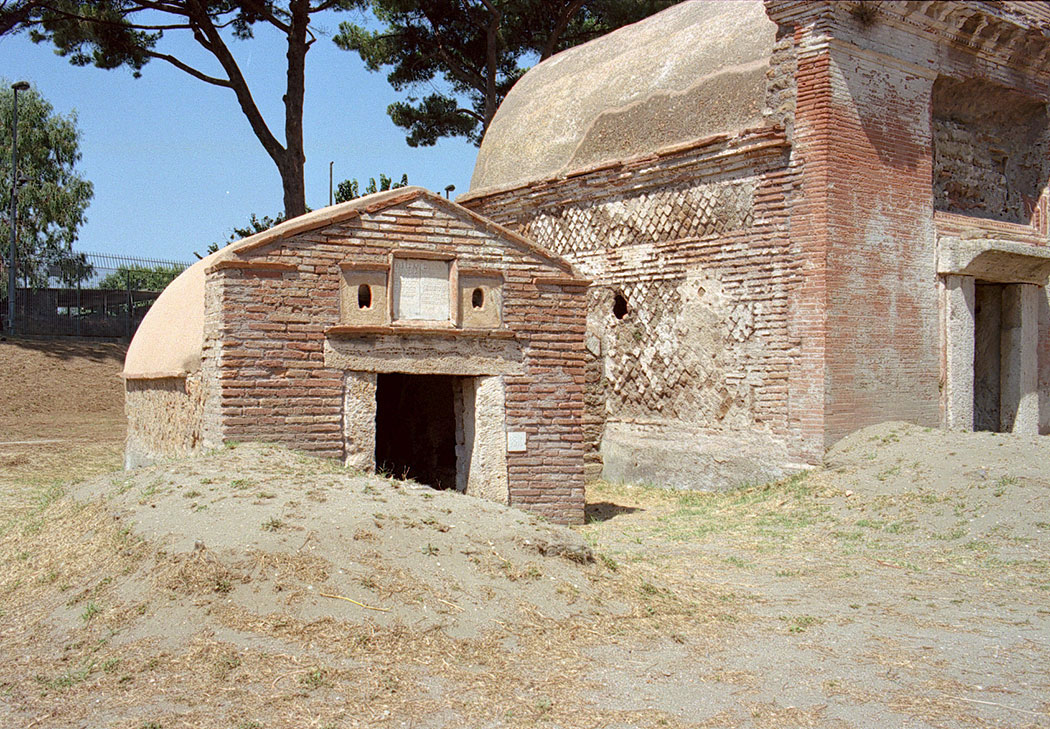
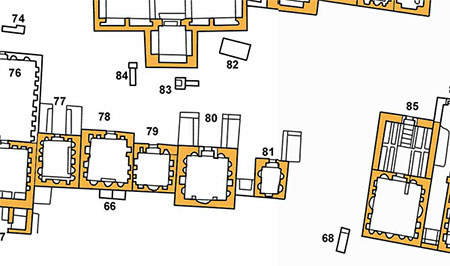 Tomb 81 is a small tomb originally completely detached. This grave too had a biclinium with a table of which the base still exists. On the left bench of the biclinium a tomb "a cassone" has been built later on.
Tomb 81 is a small tomb originally completely detached. This grave too had a biclinium with a table of which the base still exists. On the left bench of the biclinium a tomb "a cassone" has been built later on.
Above the entrance is a marble slab of 37 x 36 cms. On this slab two inscriptions were made next to each other:
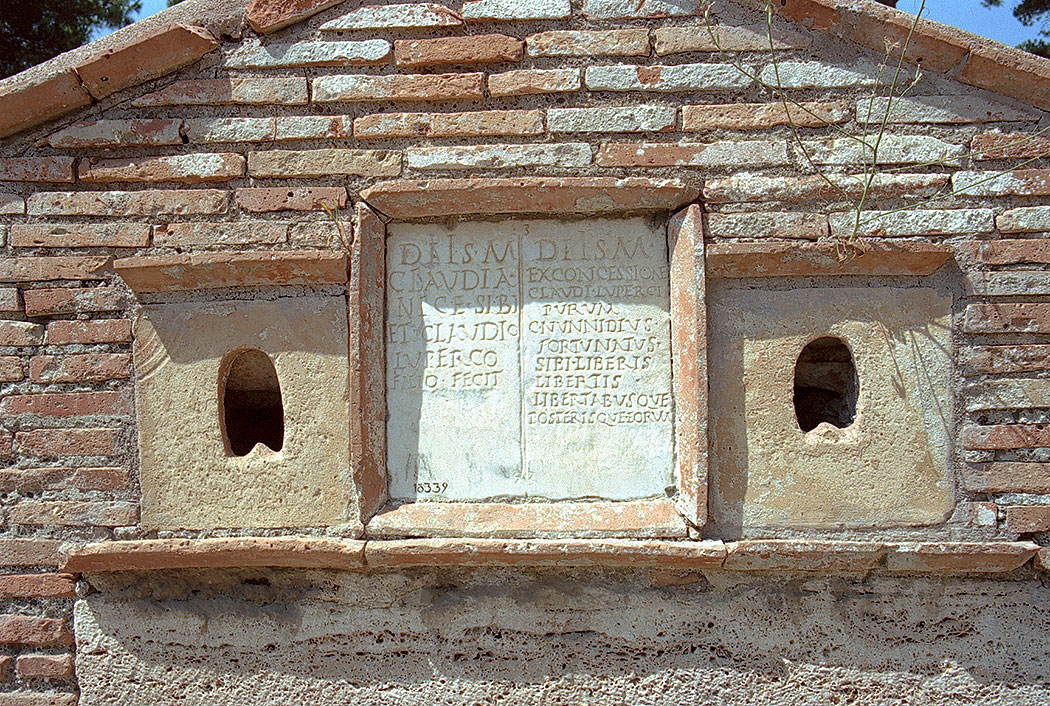
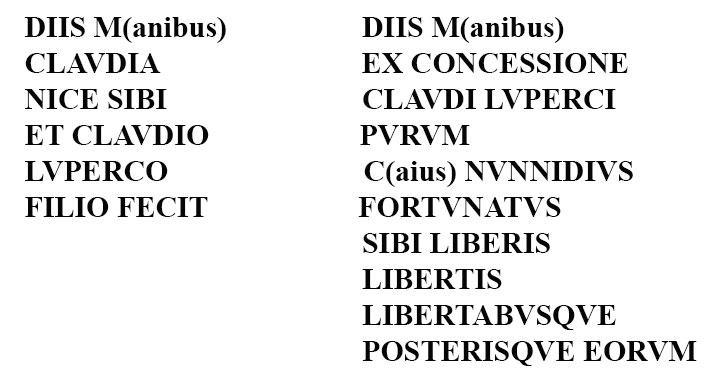
The left inscription tells us that Claudia Nice has made the monument for herself and for her son, Claudius Lupercus. The right one mentions that, with permission of Claudius Lupercus, Caius Nunnidius Fortunatus has used a part of the grave for himself, his children, freed slaves, and their children.
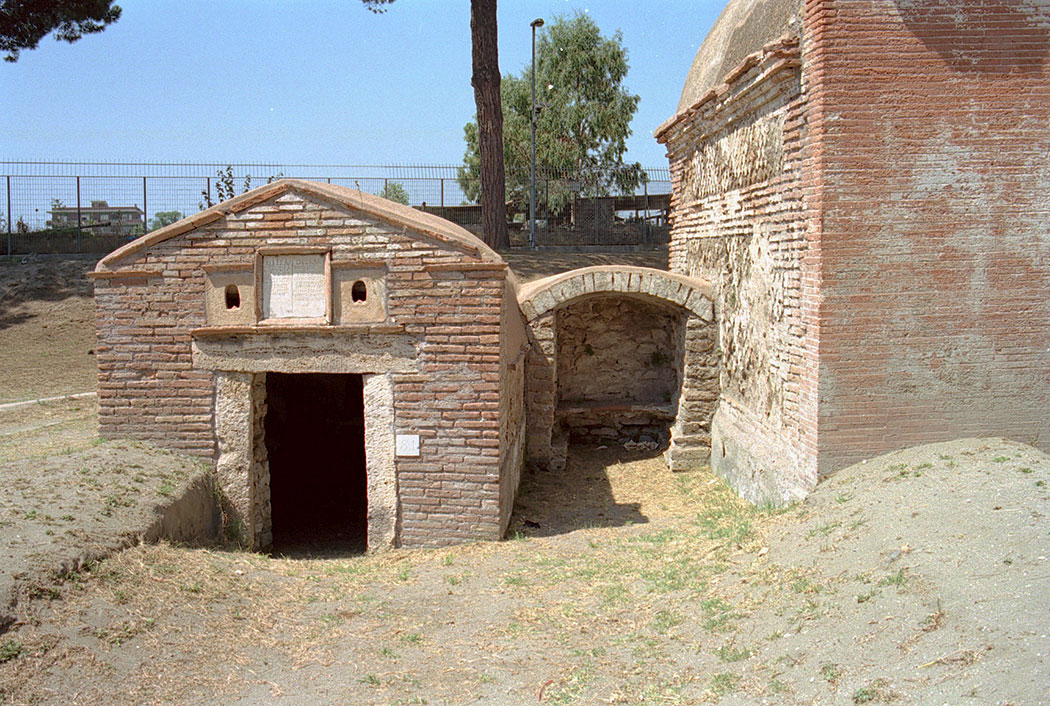
The passageway between tombs 81 and 80 was closed in later time by building a funerary oven. Tomb 80 is small and lower than the other tombs in this row. The burial chamber was meant for urns only. The walls were painted in red. Tomb 80 probably dates back to the time of Trajan.
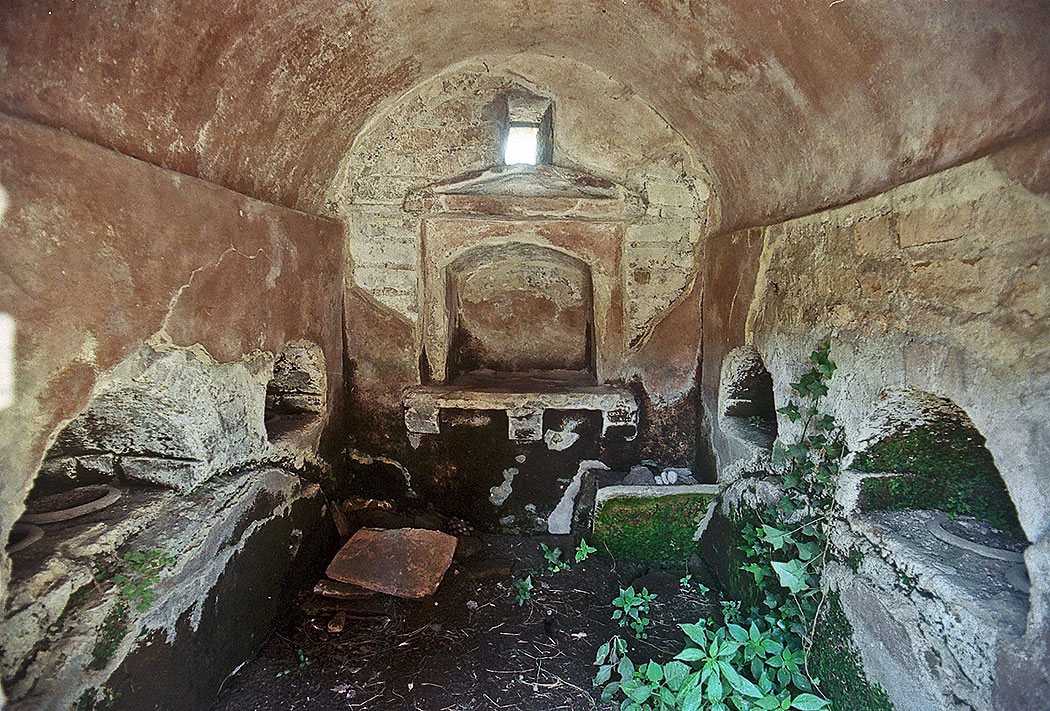
Somewhat to the west of tomb 81 we still see the remains of a tomb "a cassone", known as tomb 81A. Today the grave is completely covered and we don't have any information available.
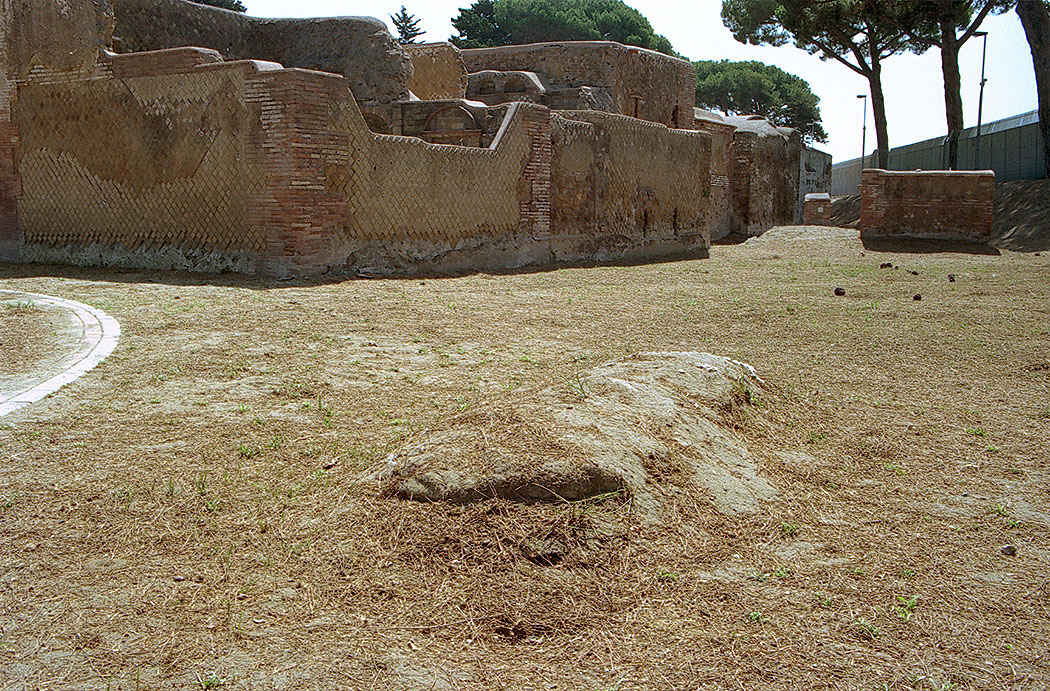
- Sources
- Russel Meigs - Roman Ostia, At the Clarendon Press 1973
- Guido Calza - Necropoli nell'Isola Sacra'(1940)
- Dr. Jan Theo Bakker.
- Hilding Thylander - Inscriptions du port d'Ostie (Lund C W K Gleerup 1952).
- Ida Baldassarre, Irene Bragantini, Chiara Morselli and Franc Taglietti - Necropoli di Porto, Isola Sacra (Roma 1996).
Isola Sacra Index

Speciale sectie over de Romeinse begraafplaats van Portus (Engels)....
Read more ...The resurfaced fleet of Pisa

In 1998, an incredible archaeological heritage was discovered by accident near the Pisa San Rossore railway station....
Read more ...Leptiminus
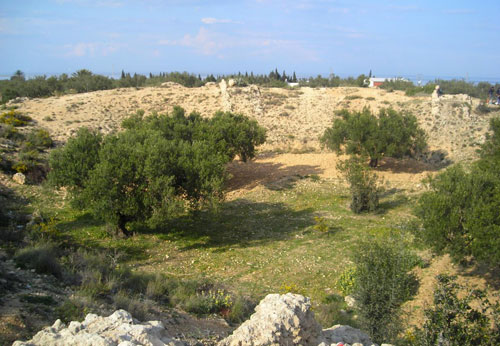
At the site of present-day Lamta on Tunisia's east coast, there was already a port city named Leptis Minor ....
Read more ...Roman maritime trade law

Roman law is the finest monument that Rome bequeathed to Western Europe....
Read more ...Sullecthum (Salakta)

In the Sahel, in the Tunisian province of Madhia, we find by the sea the small town of Salakta....
Read more ...
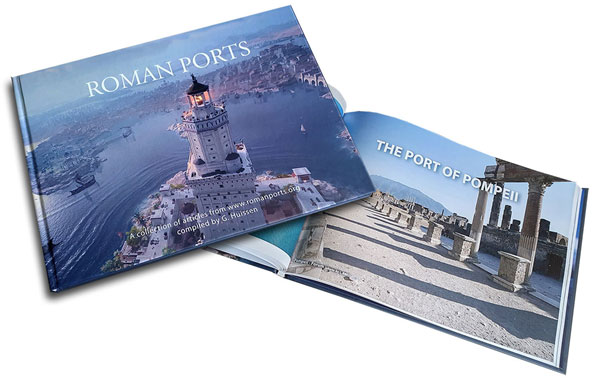
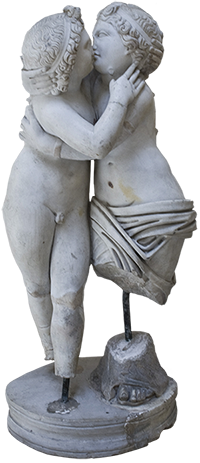 We are committed to providing versions of our articles and interviews in several languages, but our first language is English.
We are committed to providing versions of our articles and interviews in several languages, but our first language is English.